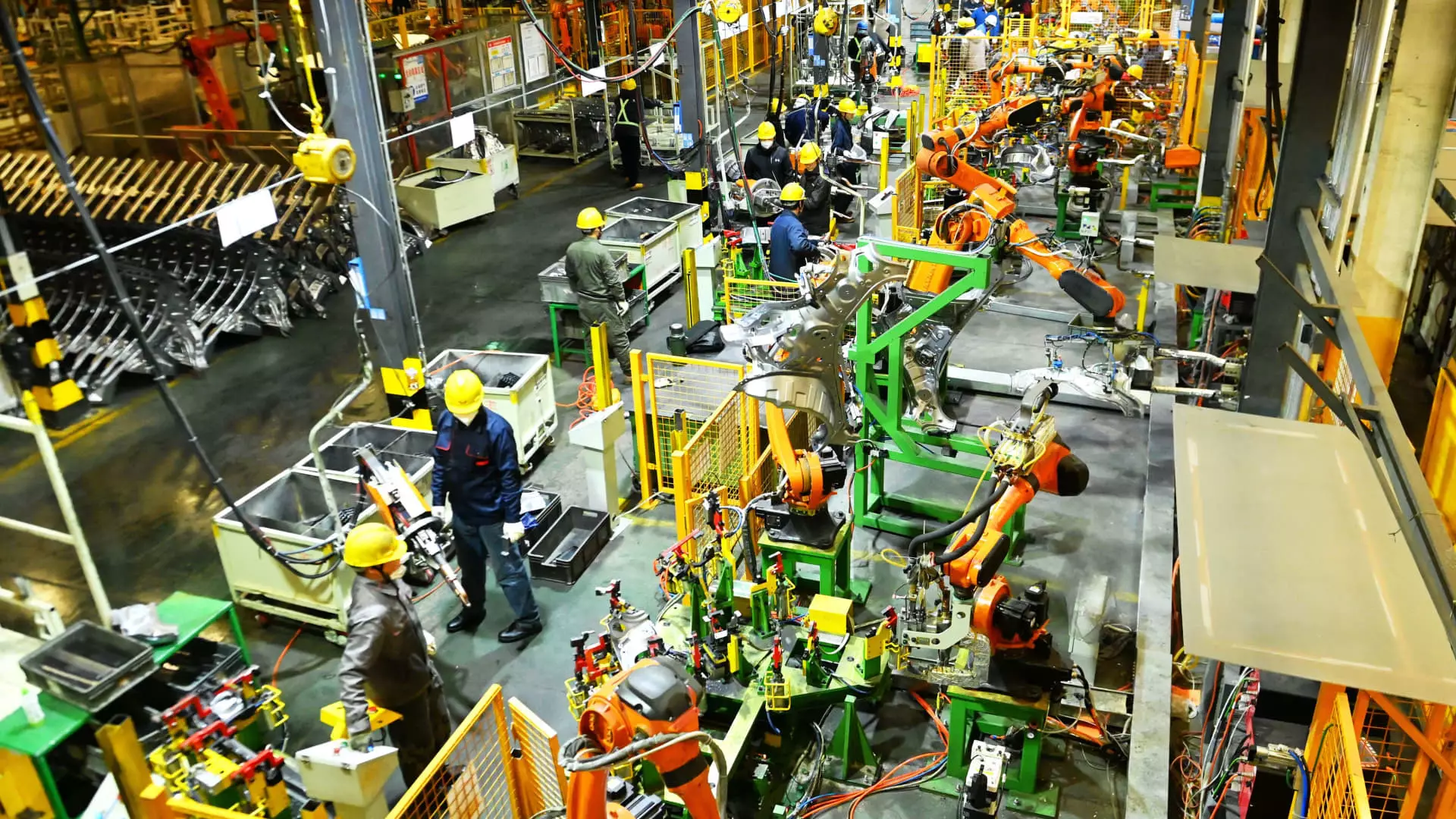The automotive industry stands at a crossroads, grappling with the direct impacts of President Donald Trump’s tariff policies. As he ponders potential exemptions for automakers, particularly concerning auto parts imported from China, one cannot help but scrutinize the overarching implications of such decisions. This uncertainty is not merely a side note; it resonates throughout the economy and raises pressing questions about America’s industrial policy and global competitiveness.
The Tariff Tug-of-War
Trump’s administration has become synonymous with aggressive trade measures, notably the 25% tariffs on various imports, including steel, aluminum, and vehicles. Initially framed as a strategy to safeguard American jobs and enhance national security, these tariffs are now raising alarm alarms within the very manufacturers intended to be shielded. It is a classic case of unintended consequences; while the intent may have been to bolster domestic production, automakers like General Motors are crying out for clarity on how these levies impact their operational strategies.
The recent confirmation from the White House regarding the possible exemption of auto parts from these tariffs symbolizes a flip-flopping stance that is disconcerting in the eyes of industry leaders. Are we seeing a genuine attempt to stabilize the sector, or is this merely a political maneuver to appease constituents ahead of looming elections? When executives of major automotive giants and lobby groups unite to voice their concerns, one must take heed. The united front signifies a crisis that could terminate the stability of U.S. automotive production if these tariffs are stubbornly enforced without consideration for realities on the ground.
A Distressing Industry Perspective
The severe aftermath of tariffs extends beyond just financial concerns. According to multiple automotive policy groups, the upcoming tariffs on auto parts could lead to widespread distress among suppliers already struggling to keep up with increased costs. This noose of levies, if tightened further, threatens to strangle innovation and production capabilities, pushing many suppliers to the brink of collapse. The emphasis should not only be on negotiating better terms with foreign manufacturers but also on nurturing domestic suppliers and upholding the industry’s vitality in its entirety.
Barra’s plea for clarity and consistency speaks volumes about the unpredictability commercial actors face in an environment riddled with uncertainty. To merely call for more regulations without addressing the immediate needs of the workforce and infrastructure leads to an aggravating paradox. The workforce that these policies are designed to protect is left adrift, as businesses operate in an unpredictable landscape where future costs could negate any competitive advantage gained through localized production.
The Perils of Protectionism
While the urge to protect American jobs through tariffs often sounds enticing, it is essential to acknowledge the pitfalls of protectionism. The illusion of securing U.S. jobs if foreign competitors are squeezed may ultimately lead to job losses domestically, owing to reduced competitiveness and innovation within the auto sector. If industry leaders cannot rely on stable and predictable trade policies, the incentive for investments in new technologies diminishes significantly.
Moreover, cultivating a culture of dependency on governmental intervention could undermine the very principles of a free-market economy, damping the entrepreneurial spirit that has long been the backbone of American progress. Increased reliance on tariffs may spark a cycle of retaliation that could backfire on the U.S. economy as foreign countries implement their own countermeasures, leading to a trade war detrimental to all involved.
Beyond Immediate Relief: A Call for Comprehensive Strategy
The issue at hand is not just about fixing the immediate crisis surrounding tariffs but also about establishing sustainable frameworks for future industrial growth. Exemptions might provide temporary relief, but they do not address the underlying inefficiencies that have crestfallen American manufacturing. A comprehensive industrial strategy that fosters innovation, streamlines regulatory measures, and encourages international collaboration is crucial for America to reclaim its position as a powerhouse in the global automotive arena.
The automotive industry’s current turmoil presents a rare opportunity for the government to collaborate with industry leaders to redefine America’s industrial policy by placing greater emphasis on outreach and innovation rather than isolationist protectionism. If the administration can shift its approach from imposing tariffs as a knee-jerk reaction to strategic investments in the supply chain, the transition could usher in a new era of automotive excellence.

